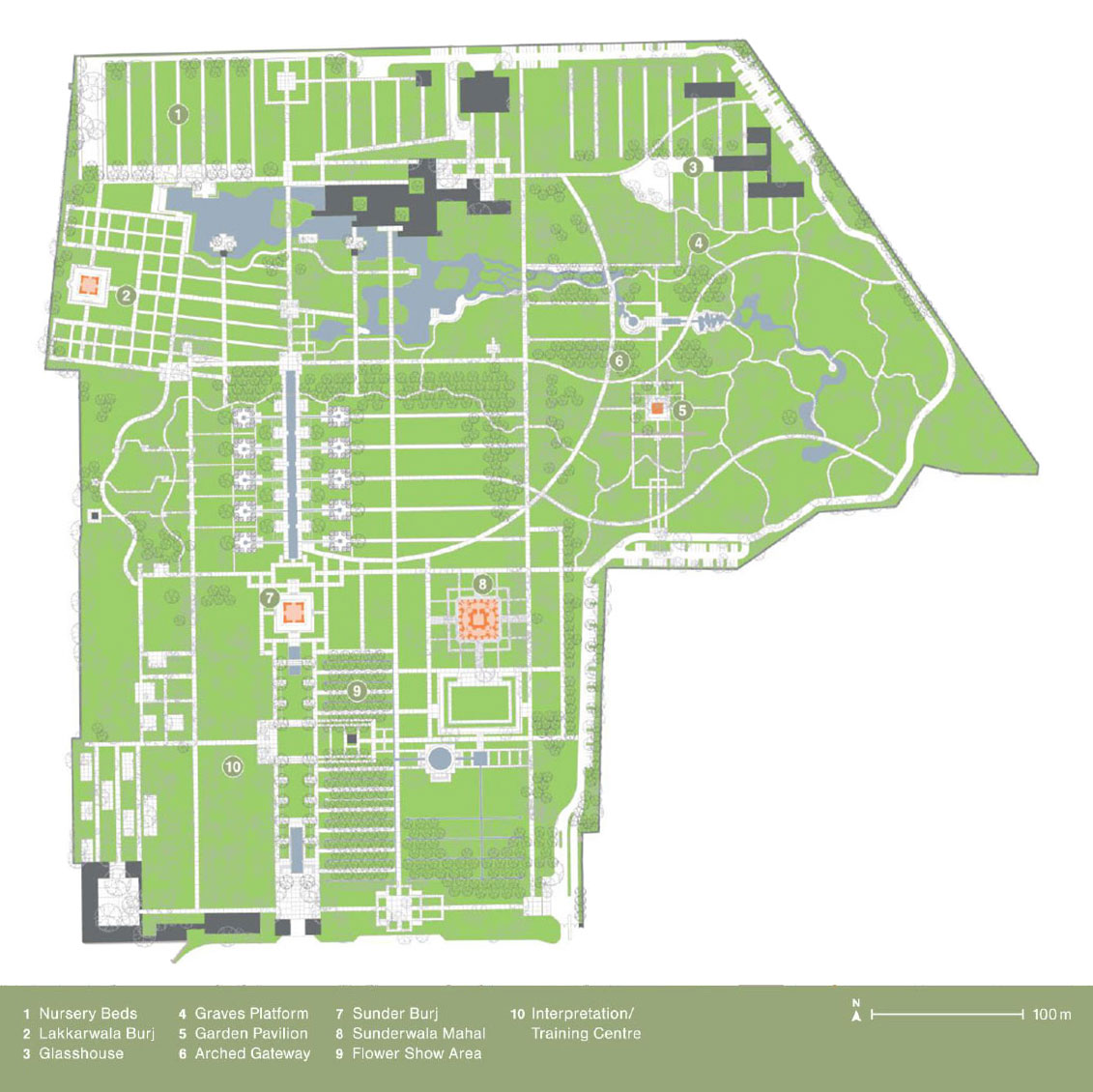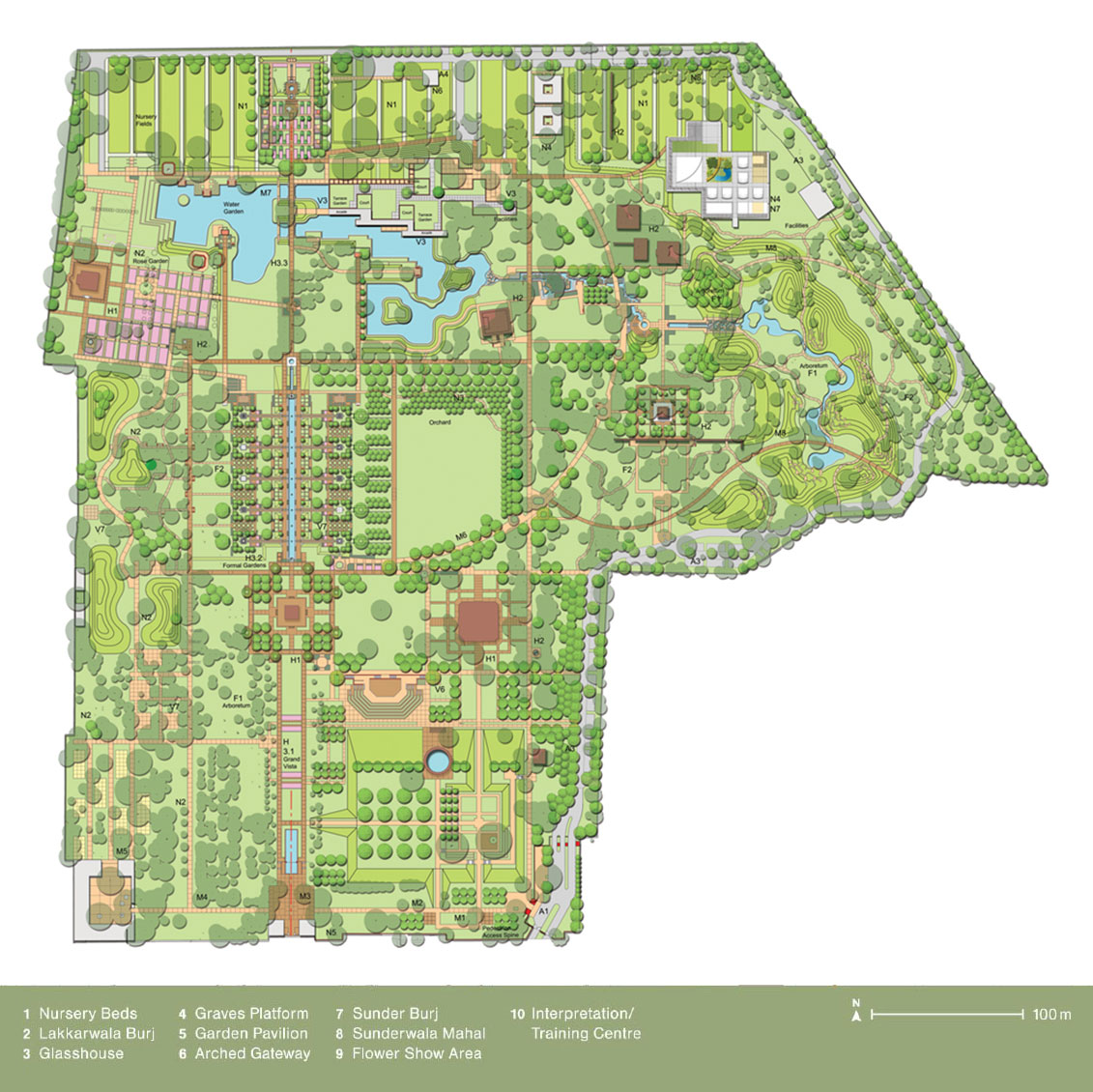Creating green spaces in urban areas constitutes a significant improvement in the quality of the environment and people’s living conditions. They are leisure spaces and meeting places for all ages and all social categories, encouraging different sectors of the population to mix and integrate. And they have proved to be catalysts for economic activity and a source of employment, both directly and indirectly, particularly through the services provided for visitors.
- His Highness the Aga Khan
Sundar Nursery is flanked by the World Heritage Site of Humayun’s Tomb (Above) on the South and the historic Purana Qila (Below) on the North and aligned to the historic Grand Trunk Road on the West. It was originally established in the early 20th century when the Imperial Delhi complex was being planned and constructed. It was used as a place for propagating trees and other plants to be used in the new capital city, and also for testing species brought from other parts of India and from overseas, to pick those which successfully thrive in Delhi’s harsh climate. A large number of these trees, some of which are only occasionally seen in the city, are still flourishing here. A few others, perhaps those found unsuitable and not used at all, are only to be found within the nursery, as rare specimens.
The nursery is in fact an archaeological site – there are scattered remains of Mughal period structures including three nationally protected monuments, together with pavilions, tombs, grave platforms, wells, and a mosque platform.

20 acres within Sundar Nursery are dedicated to plant propagation and display of plants by the CPWD, making this the largest nursery in Central Delhi.


To streamline nursery functions over 20 acres remain for nursery functions operated by CPWD, with nine acres of nursery beds, accessible by the newly laid out peripheral road, have been prepared at the northern edge of the nursery. An effective irrigation system will optimize the use of water and integrate supply with rainwater harvesting.
Standing at the edge of Delhi Zoo, the ecological zones, including secured habitat for ground nesting birds such as peafowl, will encourage migratory birds. Planting belts and groves across portions of the central fields would provide continuity of forest cover, encourage bird habitat and enhance spatial quality of the area.
The new developments at Sundar Nursery will attract a far larger number of people to Sunder Nursery to view the gardens, buy plants or to study and learn from the over 300 varieties of tree species that will eventually be planted here.
Landscape Masterplan designed by Shaheer Associates in 2008 and approved by CPWD, ASI, and AKTC has since then been working in creating Sundar Nursery as a valuable part of Delhi's Urban Heritage.
Spread over 70 acres, less than 10 percent of Sundar Nursery was utilized as an active nursery at the onset of this Urban Renewal project. In close consultation with the CPWD, a masterplan for the area was prepared in 2008 to strengthen nursery functions and blend its’s heritage, landscape and ecological assets into a veritable combination of cultural offerings.
Set up by the British in 1913, Sunder Nursery stands on the legendary 16th century Grand Trunk Road In a first for India, the CPWD, in collaboration with the Archaeological Survey of India and the Aga Khan Trust for Culture, is developing the 70 acre Sunder Nursery into a world class urban park with a distinct micro-habitat zone housing Delhi’s ecological diversity amidst restored monuments in a major effort to protect and show-case Delhi’s fast disappearing natural habitats. Upon completion, the Sunder Nursery project will provide an inclusive interactive experience for visitors through interpretation centre, cultural events and ecological and heritage trails. Dedicated spaces for exhibitions, plant nursery and shop, restaurant, café and other facilities will enhance the complete visitor experience.
Additionally, over 266 of native trees and plants have been planted – mostly in the 30 acre micro-habitat zone - to create a Biodiversity greater than any other park in Delhi. This will in future years, provide a greater varieties of plants available here.
Spread over 70 acres, most of the present Sunder Nursery site can be thought of as a productive nursery landscape dotted by historical monuments. As a measure to enhance the nursery functions on site, existing tracts of nursery beds have been relocated to the northern edge of the site increasing their area to 9 acres. Nursery-related activities such as selling plants, seeds, organic manure, flowers, etc. are anticipated to continue as major revenue generating ones with improved management and sales practices.